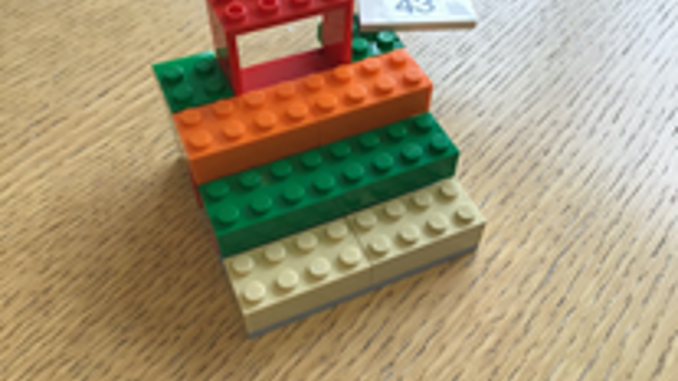
So, what is LEGO® Serious Play® and what does it do?

There are usually three typical responses I get when I mention, in response to the question “what do you do?” and I’ve replied, “I’m a LEGO® Serious Play® facilitator.”
There’s the person who thinks they’ve experienced LEGO Serious Play: “Oh, yeah – I’ve done that – we had to build a bridge in a team session.”
There’s the person who knows they’ve experienced LEGO Serious Play: “It was great – I didn’t know it could do that.”
There’s the person who doesn’t know what I’m talking about: “Oh; what’s that? – tell me about it.”
I usually begin with…
“Have you ever been in a meeting or a workshop where you’ve sat through seemingly endless PowerPoint slides so crammed with words that you don’t have time to read them before the next one comes up, or the presenter simply reads them word for word?”
“Have you ever been in a meeting or a workshop where the person controlling the meeting – the one holding the pen at the flip chart – already knows all of the answers so what’s the point in trying to suggest an alternative idea?”
“Perhaps there’s been a time when one or two people dominate the conversation while others don’t contribute. Maybe they are in the wrong meeting or simply worried their voice won’t be heard. Either way, what’s the point?”
…I then go on to explain…
“It’s a methodology that ensures democracy in the room by giving everyone an equal voice and meaning no-one person can monopolise the discussion?”
“I always start with understanding what the type of outcome is expected of the workshop and design it around those principles. Each and every workshop has a bespoke design.”
“We get started with a warm-up exercise just to make sure everyone is comfortable with the bricks and then get into the workshop proper. I ask a series of questions and everyone builds their own three-dimensional model to answer each question. Then each person describes their model and, here’s the clever bit, if there are any questions they’re directed through the model; ‘why are all the bricks blue’; ‘what’s the importance of that piece?’ All of a sudden the meeting has been de-personalised; it’s become open and honest.”
“This thinking with your hands to build 3D models unlocks hidden knowledge and delivers better results. It produces more concrete ideas because everyone has time to build their answers and input before conversation and knowledge sharing begin.”
It’s at this point I either show some photographs of models or, better still, the models themselves.

“This one is from a workshop where communication across a team of more than 100 colleagues wasn’t working. There was already a weekly newsletter, monthly meetings and the Director’s Blog. We asked How do you want to receive communications?”
“Here’s one of the ideas that was adopted. Communications are delivered at three levels: a headline that may inspire the reader to read a single paragraph that summarises the item, or a full article that is of great interest to the reader. It was all about the need to know.”

I finish with…
“The best way to understand LEGO Serious Play is to experience it, so if you have an hour spare then I’m more than happy to do you a hands-on demo. You’ll see it’s outrageously versatile.”
- Focus on… Lego Serious Play - 14th February 2020


Great stuff! Awed to be published in the inaugural edition Ludogogy with you. Kudos and happy (serious) playing!
What a brilliant article, Simon! Thank you for sharing your experience. I participated in a LEGO Serious Play workshop last year in December at the Gamification Europe conference in Berlin. It was for the first time. What I like most about it is that it is utterly anthropological: both non-judgmental and encouraging curiosity, learning, and full engagement. I discovered anthropology and awareness, which it builds, to be the foundation of turning our lives into games. LEGO Serious Play is an inspiring model, and its principles can be used in any type of learning or brainstorming workshop.
Thanks for taking us inside your workshops, Simon. Sounds like you have facilitated many productive conversations. I’d be interested to know if the groups you work with continue using the LEGO Serious Play principles without you and/or the lego pieces?
Thanks for this article, Simon. I often struggle with explaining how LSP can be of help, and this gives me some ideas of what to say. I know you are also involved in the Earth Day initiative. It would be great if those of us who have taken part (once we have) could do a bit of a collaborative write-up to go in the May Issue – or even as a ‘extra’ edition for the April Issue. What do you think?